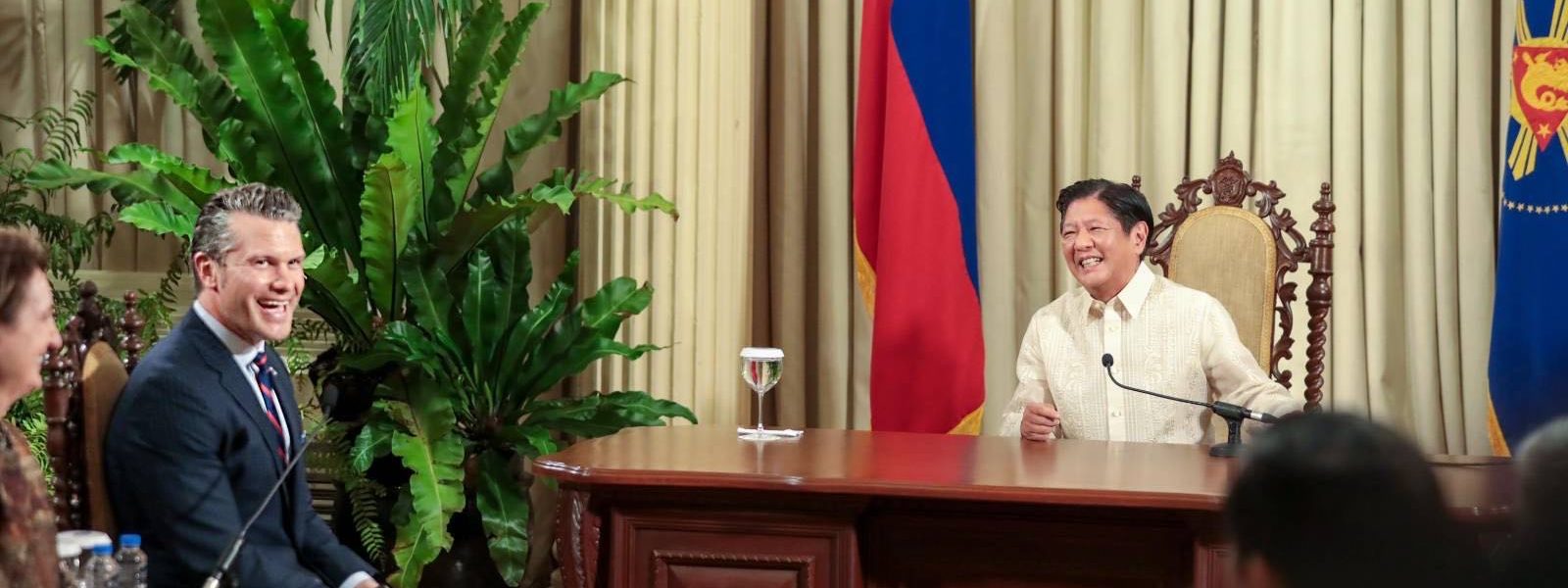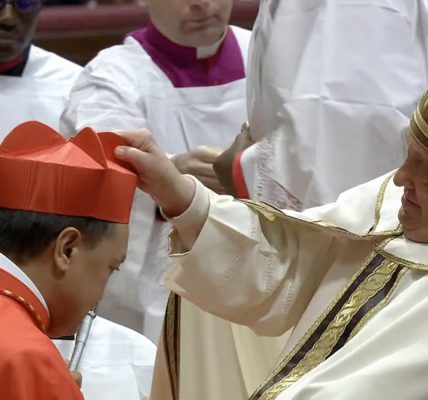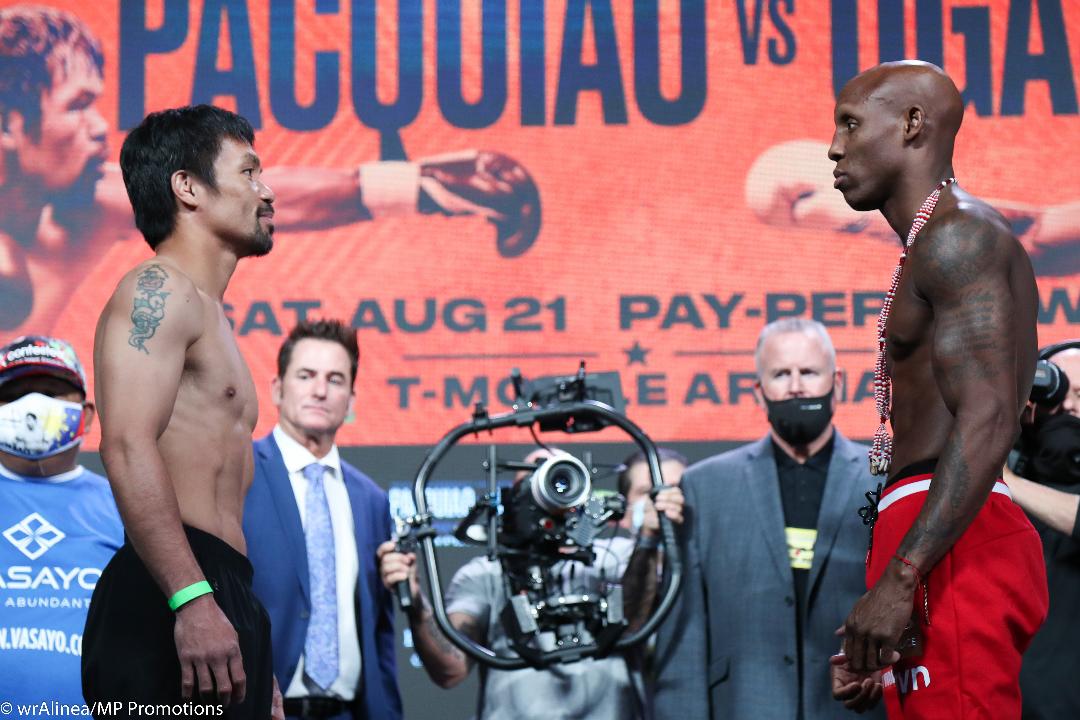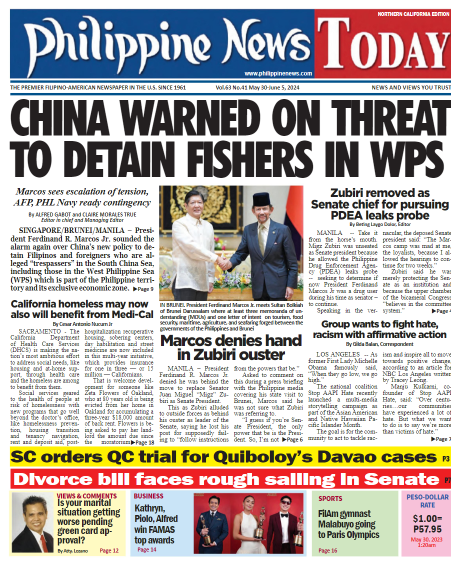Hegseth visits Manila, reaffirms ‘ironclad’ commitment to PHL-US defense; Rubio coming next
WASHINGTON/MANILA – As United States Defense Secretary Pete Hegseth visited Manila on March 28 and 29 bolstering defense and security ties with the Philippines, US Secretary of State Marco Rubio plans to visit the Philippines next month to reaffirm the importance of the Philippines-US alliance in the Trump administration.
This developed as Philippine President Ferdinand Marcos Jr. maybe headed to the White House in the next few months to meet with US President Donald Trump, according to Philippine Ambassador to Washington Jose Manuel Romualdez.
In a courtesy call at Malacañan Palace in Manila, US Defense Secretary Pete Hegseth assured President Ferdinand R. Marcos Jr. that US President Donald Trump is “very committed” to deepening Washington’s alliance, friendship, and partnership with the Philippines.
“I had a chance to speak just a few minutes ago to our president, President Trump, who sends his regards to you as well (and) thinks very fondly of this great country,” Hegseth told Marcos.
“And he and I both want to express the ironclad commitment we have to the Mutual Defense Treaty (MDT) and to the partnership, economically, militarily, which our staffs have worked on diligently for weeks and weeks and months.”
Hegseth said the US has a “great interest” in expanding its military cooperation with the Philippines, saying it is “mutually beneficial” and “critically important” for both countries.
He expressed optimism that he would have “deeper” conversations about the two nations’ partnership during his stay in the Philippines.
“And thank you for your leadership in being a friend to the United States. We look forward to many more opportunities to work together,” Hegseth said.
Marcos said being a friend to the US is “inherent with most Filipinos,” considering the relationship the two countries have built over a hundred years in various forms.
The Philippines and the US established formal diplomatic relations on July 4, 1946.
The US is also the Philippines’ oldest and only treaty ally.
Bilateral defense and security engagement remains a key pillar of the two nations’ bilateral relations and is carried out within the framework of the MDT, the Visiting Forces Agreement, the Enhanced Defense Cooperation Agreement, and other bilateral agreements.
The 1951 MDT, the longest-running defense pact, aims to step up the defense and security cooperation between Philippine and US troops.
Inked on Aug. 30, 1951, the MDT is an accord that stipulates that the Philippines and the US would support each other in case one of them is attacked by an external party.
In another development, some 5,000 soldiers from the Philippine and the United States (US) armies started their three-week of joint military exercises “Salaknib” with drills focused on territorial defense and commanding large-scale deployments of forces.
Meanwhile, more Filipino and American troops are gearing for a wider “Balikatan” drills that will include live-fire missiles. (See related stories)
The Salaknib and Balikatan exercises will focus on enhancing combined operations between their army, large-scale maneuvers, live-fire exercises, and territorial defense, according to the Philippine Army.
Hegseth met his Philippine counterpart Defense Secretary Gilberto Teodoro Jr. in Camp Aguinaldo, Quezon City.
As part of the US efforts to establish deterrence in the Indo-Pacific Region, American Department of Defense (DOD) Secretary Hegseth said they would deploy “additional capabilities” or weapons in the Philippines.
In a press briefing shortly after his meeting with Secretary Teodoro Jr. in Camp Aguinaldo, Quezon City on Friday, Hegseth said this initiative is part of efforts to beef up the military partnership between the two nations.
“We agreed on the next steps to re-establish, and that’s key, re-establish deterrence in the Indo-Pacific Region. These efforts build on an ongoing US$500-million commitment in foreign military financing and other security assistance to support the Philippines’ military modernization,” he added.
This was tackled during his meeting with President Ferdinand R. Marcos Jr. and the DND chief, Hegseth said.
“First, we agreed that the United States will deploy additional advanced capabilities to the Philippines. This includes using the NMESIS (Navy-Marine Expeditionary Ship Interdiction System) anti-ship missile system and highly capable unmanned surface vehicles in Exercise ‘Balikatan’ this April,” the American defense official said.
Hegseth added that these systems will allow US forces and the Armed Forces of the Philippines (AFP) to train together on using advanced capabilities to defend Philippine sovereignty.
“Second, to enhance interoperability for high-end operations, we agreed to conduct bilateral special operation forces training in the Batanes Islands,” the DOD chief said.
Also, Hegseth said he and Teodoro agreed to prioritize bilateral defense industrial cooperation, as this is important.
“So today (Friday) we published a joint statement outlining our priority areas for cooperation. This includes co-producing unmanned systems and increasing combined logistics support. I was just in Guam before I came here. We can talk about big systems and advanced technologies, but if you don’t have logistics support, I see the folks who run militaries and run formations, you need logistics support to actually operate and advance forward,” he said.
Hegseth said these initiatives will help the two nations share burdens and promote a more comprehensive partnership.
“We intend for these efforts to boost both of our economies and strengthen supply chain resilience. And finally, we agreed to launch a bilateral cyber campaign. We’re going to work together to reduce cyber vulnerabilities across our alliance, and increasing cybersecurity will allow even more advanced operational cooperation,” he added.
Armed Forces of the Philippines (AFP) spokesperson Col. Francel Margareth Padilla said Hegseth’s visit reaffirms Washington D.C.’s announcement of its strong commitment to support Manila.
“This visit reaffirms na laging sinasabi ng ating ally for a long time na US na yun commitment nga nila is ironclad itong sa pag-support sa atin (that their commitment to support us is ironclad),” she added.
Padilla also said that Hegseth’s visit also shows the US is keen on beefing up its existing military alliance with the Philippines.
It will be the first in-person meeting between Hegseth and Teodoro, following a phone conference in February.
During the telephone conference, Teodoro congratulated Hegseth on his appointment as DOD chief even as both officials expressed optimism on the deepening defense ties of the two nations.
Earlier, Teodoro called China’s expansive claims in the South China Sea “the biggest fiction and lie,” adding that Chinese President Xi Jinping’s aggressive policies have undermined international goodwill fostered by his predecessors.
Teodoro fired off his latest tirade against China’s increasingly assertive actions in the region after the Philippine coast guard separately reported new incidents involving Chinese forces in the Scarborough Shoal.
A Chinese military helicopter appeared to have tailed, but didn’t closely approach, a Philippine lightplane undertaking a routine patrol Monday over Scarborough.
Chinese forces have also installed a new floating barrier to prevent Filipino fishermen from entering a lagoon in the shoal, Philippine coast guard Commodore Jay Tarriela said.



















